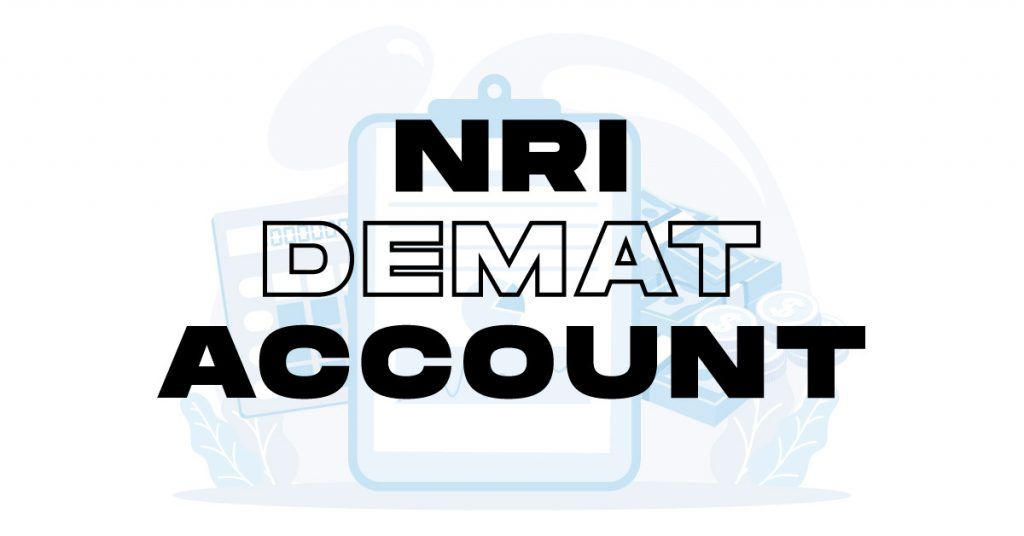What is IPO Listing?
Written by Upstox Desk
Published on July 31, 2025 | 9 min read

Initial Public Issuing (IPO) is when an unlisted company becomes listed on a stock exchange by offering its shares on the primary market. A firm's existing operations can be expanded, new projects can be established, or any other goal mentioned by the company in its offer document can be achieved through an initial public offering.
Before an IPO, a corporation may have very few stockholders. Founders, angel investors, and venture capitalists are a few examples. The corporation offers its shares to the general public during an IPO. You can acquire shares directly from the company to join as a shareholder or an investor.
IPO Listing Process
When a private business decides to raise money by becoming a publicly listed company, the company hires an underwriter, typically a group of investment banks, which determines the price range, the number of shares to be issued, and other factors after evaluating the company's financial needs.
They then prepare the application for approval (to the Securities and Exchange Board of India), which includes information on the company's prior financial performance, including:
- Profits
- Debts/liabilities
- Assets
- Net worth
The proposal also describes the intended use of the money raised.
After carefully reviewing the application and confirming that all eligibility requirements have been met, SEBI authorizes the company's issuance of the "red herring prospectus." It is a document published by the company that lists the number of shares and the issue price (price per share) to be offered in the IPO.
The company's past performance is also described in the red herring prospectus. Following this, company executives engage in what is referred to as a "roadshow" to meet and attract prospective investors to purchase shares of their company. Though typically available for five days, an IPO listing can start and last for 3-21 days.
Retail investors can place online bids for stocks at this time through their banks or brokers. To participate in an IPO listing, investors must have a PAN card and a Demat account. The shares you bid on will be credited to your Demat account if they are allotted. If not, you'll receive a refund.
Primary vs. Secondary Market: Regular Trading vs. Trading Through IPO Listing
In India, there are two different kinds of stock markets: the primary market and the secondary market. Companies first make their shares available to the public on the primary market. Consequently, IPO listing activity occurs in the same market. A company transforms from private to public during an IPO. The shares can, however, trade in the secondary market after the business issues them in the primary market. As a result, after the IPO listing, you can simply acquire and sell shares on the secondary market.
You must carefully review the prospectus materials and the company's financials if you plan to invest in an IPO. Since the company is now publicly traded for the first time, you wouldn't know anything about the share price changes.
On the other hand, frequent investing allows you to examine the company's financials and research the share price changes in relation to various market cycles. An IPO investment might be made for long-term or listing gains. Regular investing can be used for both long-term and short-term trades at the same time.
What is an IPO Listing Date?
The date when IPO shares begin trading on stock exchanges (Bombay Stock Exchange, National Stock Exchange) is referred to as the IPO Listing Date. The company's shares are officially listed on the stock market once an IPO concludes, and shares are allotted. The listing date is the first day shares are available for trading on the market.
This date is significant because investors who missed the IPO can now purchase it on the stock market. Furthermore, investors who received shares in the IPO may seek to profit from the listing by selling their shares.
IPO Subscription
The number of shares that have been requested in an IPO is the IPO subscription data, which reflects the level of interest in a company's stocks. The websites of the stock exchanges provide real-time access to this information, which is tracked separately for each type of investor (Institutional, Non-Institutional, Retail, etc.).
During the subscription period, you can make an investment in an IPO, and on a specified day, you can verify the status of your subscription. You can make your IPO bid with either the Bombay Stock Exchange (BSE) or National Stock Exchange (NSE).
Visit the relevant stock exchange's website to view the most recent IPO subscription information. On the final day of the IPO subscription process, you can acquire the final bidding details even though the numbers keep changing during the subscription process.
IPO Allotment
IPO allotment takes place under the rules and regulations of SEBI. You will not be able to foresee whether you've been allocated any shares. Allotments are reserved along the categories of Qualified Institutional Buyers (QIB), non-institutional buyers, and retail investors.
The IPO allotment procedure involves the registrar of the office allocating IPO shares in accordance with the bids made by individual investors. Upon announcement of an IPO, a company's total equity shares are divided into lots; investors can bid in multiples of these lots, not in the number of shares.
When the total number of bids exceeds the number of lots offered, every investor gets the allocation numbers they had applied for. SEBI regulations do not allow individual retail investors to get more than one lot allocated for them.
When more bids are available than IPO shares, it raises a circumstance known as oversubscription; the assignment of shares takes place via lottery in such cases. There are two possible oversubscription scenarios, namely:
-
Small Oversubscription
All applicants will receive a minimum lot, and any investors who placed bids for more than one lot will receive a proportionate share of the remaining shares.
-
Large Oversubscription
When there is such an oversubscription that even one lot cannot be distributed to each applicant, allocation is done by random drawing. Without showing any bias, a machine will conduct this lottery draw. As a result, during periods of significant oversubscription, not all entries are picked in the lottery, and not all applicants are given shares.
Shares are assigned to your name based on the outcome.
Tips to Increase Your Chances of Allotment
- Try making applications with various DEMATs linked to different PANs.
- To improve your chances, place a greater bid. Priority is given to bidders willing to pay the cut-off price.
- During the first and second days, check the IPO allotment status for Qualified Institutional Buyers (QIB), non-institutional buyers, and the retail category to assess the market reaction. Continue with your application if the response is favorable.
How is the listing price decided?
-
Demand
The market demand for the company and the IPO determines the listing price of an IPO. The listing price rises directly with the demand. The sector, the growth potential, and the anticipated valuation are only a few of the variables influencing the demand for the IPO.
-
Grey Market
Investors are willing to pay an additional sum known as a "grey market premium" to purchase IPO shares or applications. A grey market is an uncontrolled area that provides insight into the demand for an IPO.
It is the extra cost above the offer price that an investor is prepared to pay. Many people sometimes use the GMP to determine whether or not they should invest in an IPO. However, this is not always the case. Higher GMP does not guarantee a successful listing for the IPO.
-
Offer For Sale Value
The quantity of shares that a current investor is willing to dilute with the IPO is the offer for the sale of an IPO. Higher OFS values may hurt listing prices.
How to check IPO listing allotment?
A corporation publishes a proposed IPO allotment date when it releases information about its IPO. The public gets informed of the IPO's allotment status on this day. Online updates on the IPO allotment status are now common. Visit the registrar's website to learn the status of your offer. You can search using your PAN, DP Id, or application number. You can also verify the status of your IPO allocation by following the steps listed below:
- Browse the BSE IPO subscription status website
- Select the "Issue Type" tab and choose "Equity." You can keep track of your debt investments online as well.
- Decide on the IPO's name. The IPO list can be found by selecting a drop-down menu.
- Enter the box with your application number. The application number can be found on the acknowledgement receipt of the exchange or bank forwarded.
- Type in your PAN or Permanent Account Number.
- Check the box next to 'I am not a robot and select 'Search.' The BSE website will reflect your allotment status, including the number of shares you have been assigned.
If your name is among the few who get the IPO allotment, you should expect your shares to be sent to your Demat account within three days after the allotment date. However, if you do not receive the allotment, the blocked funds will be refunded before or after the listing.
Frequently Asked Questions (FAQs)
Q. What is IPO allotment?
After an IPO is announced, different investors apply for shares. Crediting the applied shares to the investor's account is IPO allotment.
Q. What is a registrar?
Each IPO has its own registrar. A financial institution registered with stock exchanges and SEBI is a register of IPO. Registrars keep track of the company's share issuance and ownership. The registrar is in charge of allotting shares to IPO investors, processing refunds and transferring allocated shares to investors' Demat accounts.
Q. How to check IPO allotment status?
The registrar's website provides access to the allotment status. An investor can verify their allotment status by providing their PAN number or the IPO allocation number.
Q. How can I increase the chances of my IPO allotment?
Retail investors can increase the chances of allotment by applying for shares through multiple Demat accounts linked with different PANs.
Q. What is the IPO allotment date?
On the IPO allotment date final allotment status is announced. It is usually placed within a week from the subscription date, within which the allotment process is finalized.
Q. What is the IPO grey market?
An IPO grey market is where dealers bid and offer a company's shares unofficially. This happens before the company even issues shares in an IPO.
About Author
Upstox Desk
Upstox Desk
Team of expert writers dedicated to providing insightful and comprehensive coverage on stock markets, economic trends, commodities, business developments, and personal finance. With a passion for delivering valuable information, the team strives to keep readers informed about the latest trends and developments in the financial world.
Read more from UpstoxUpstox is a leading Indian financial services company that offers online trading and investment services in stocks, commodities, currencies, mutual funds, and more. Founded in 2009 and headquartered in Mumbai, Upstox is backed by prominent investors including Ratan Tata, Tiger Global, and Kalaari Capital. It operates under RKSV Securities and is registered with SEBI, NSE, BSE, and other regulatory bodies, ensuring secure and compliant trading experiences.

























